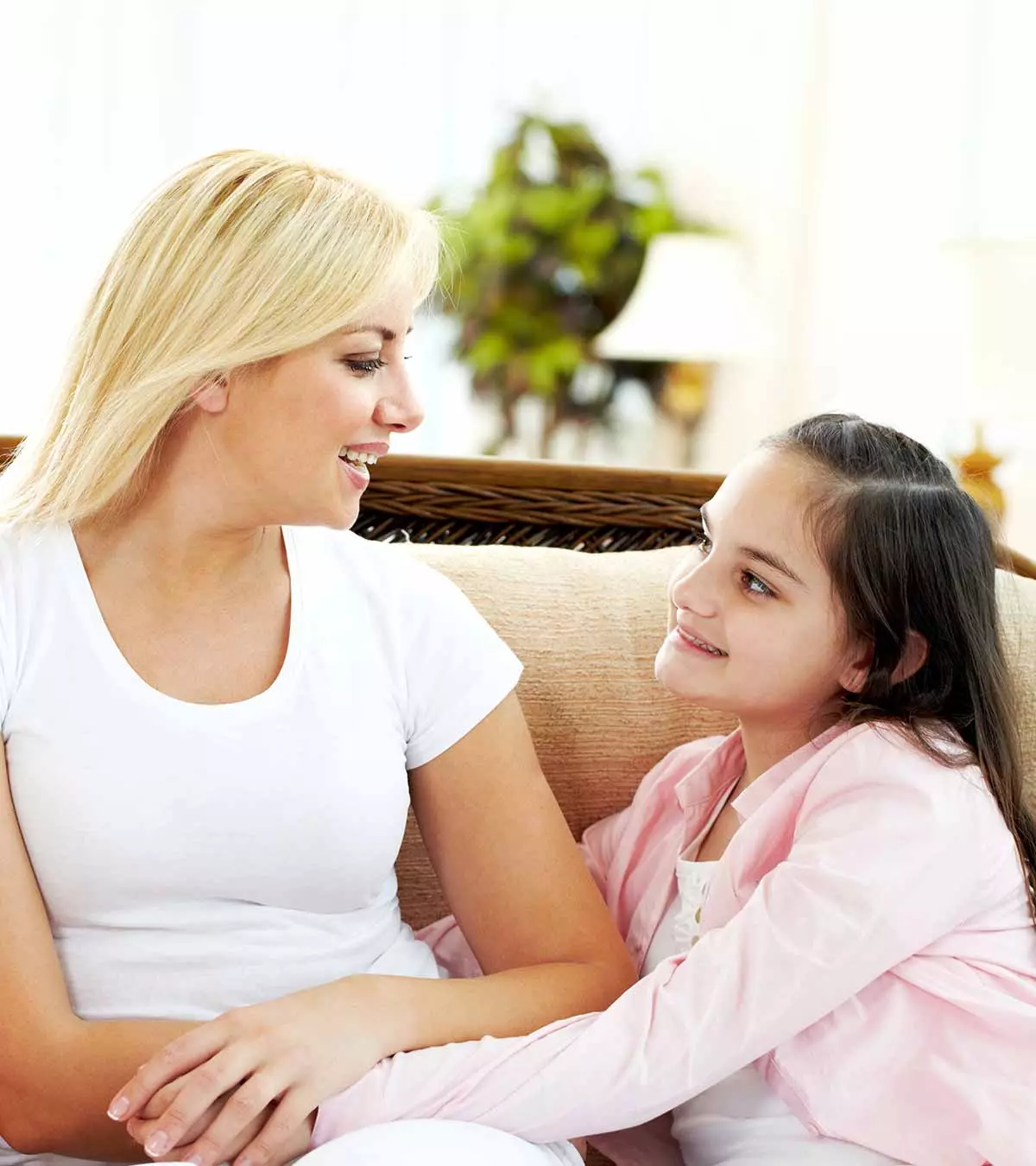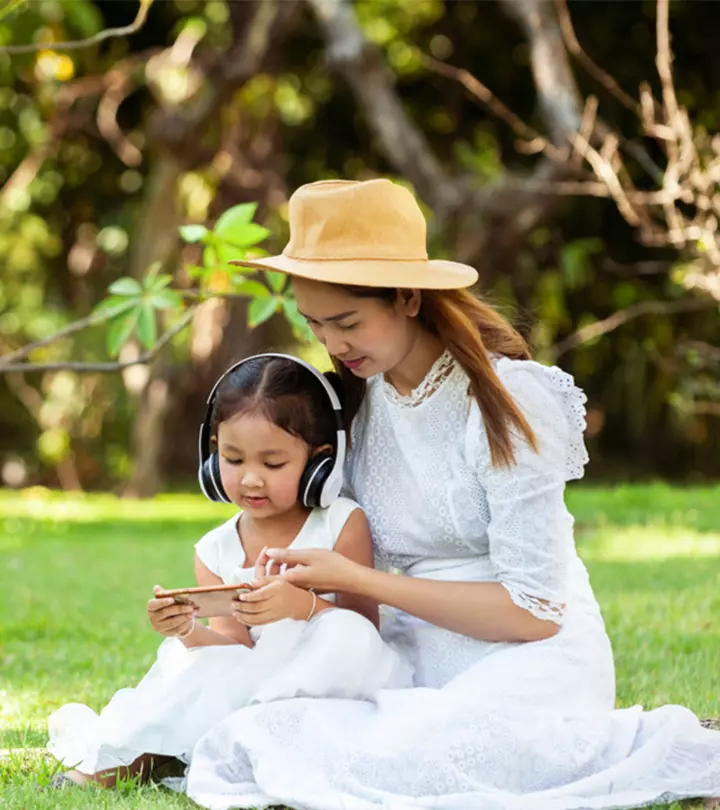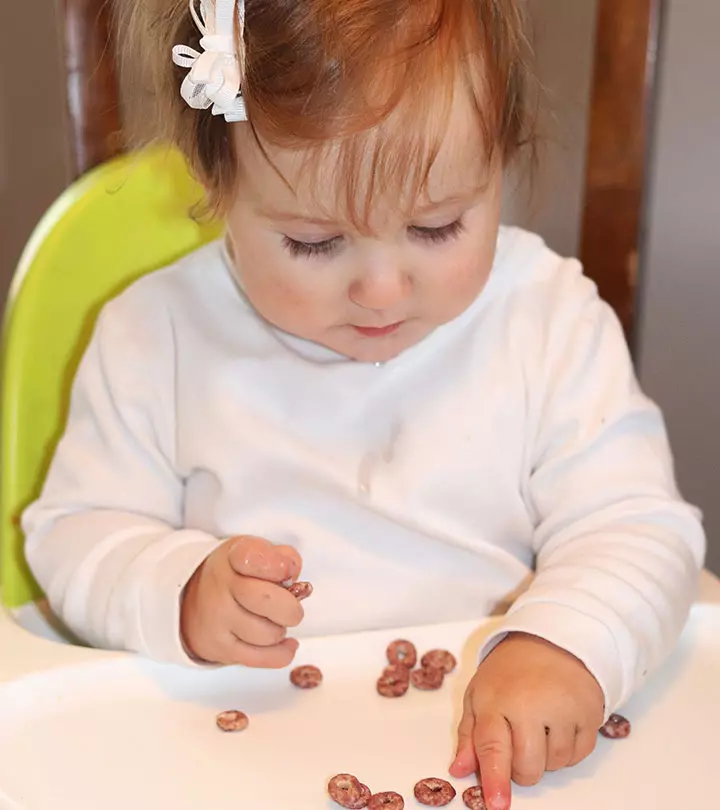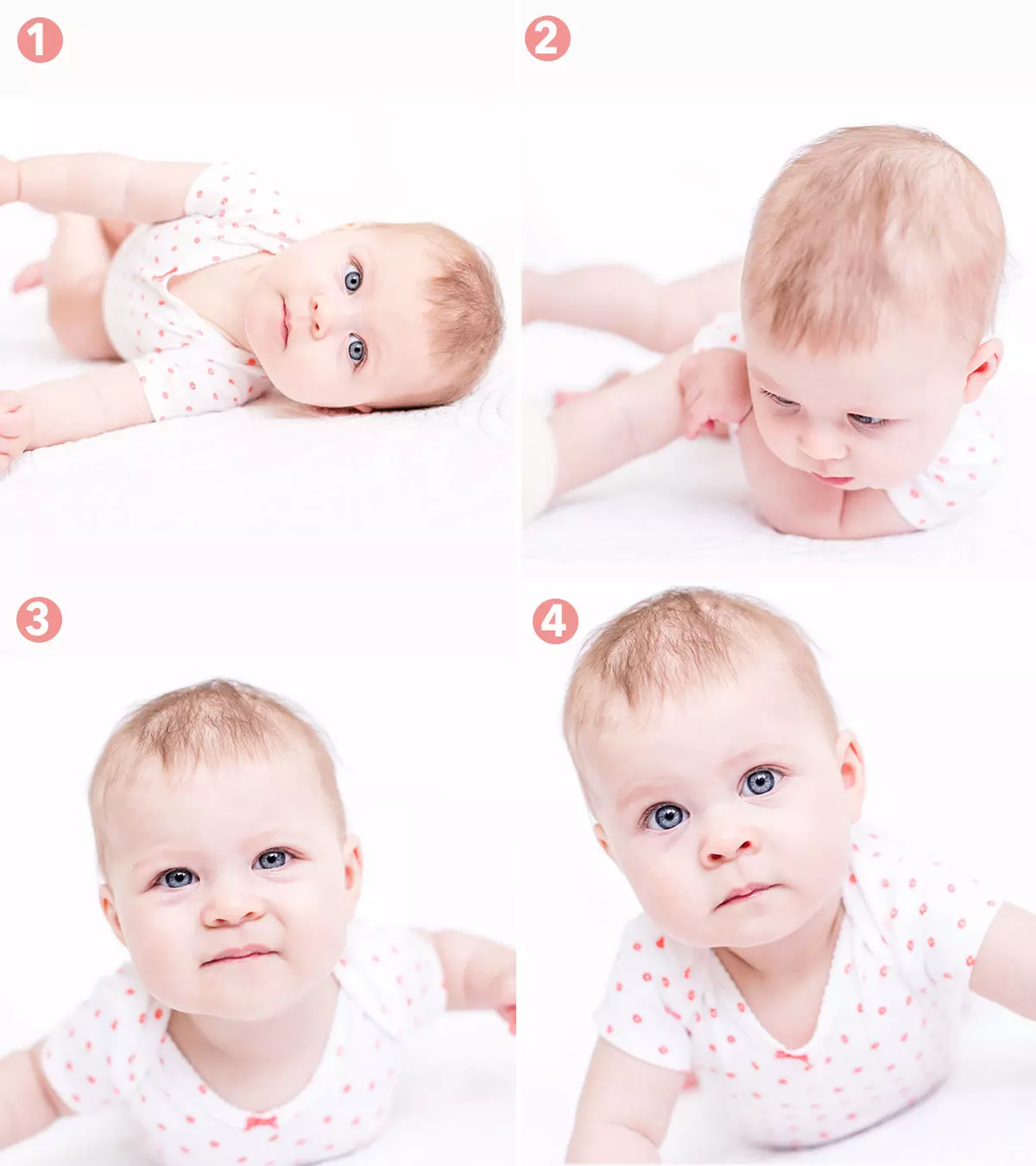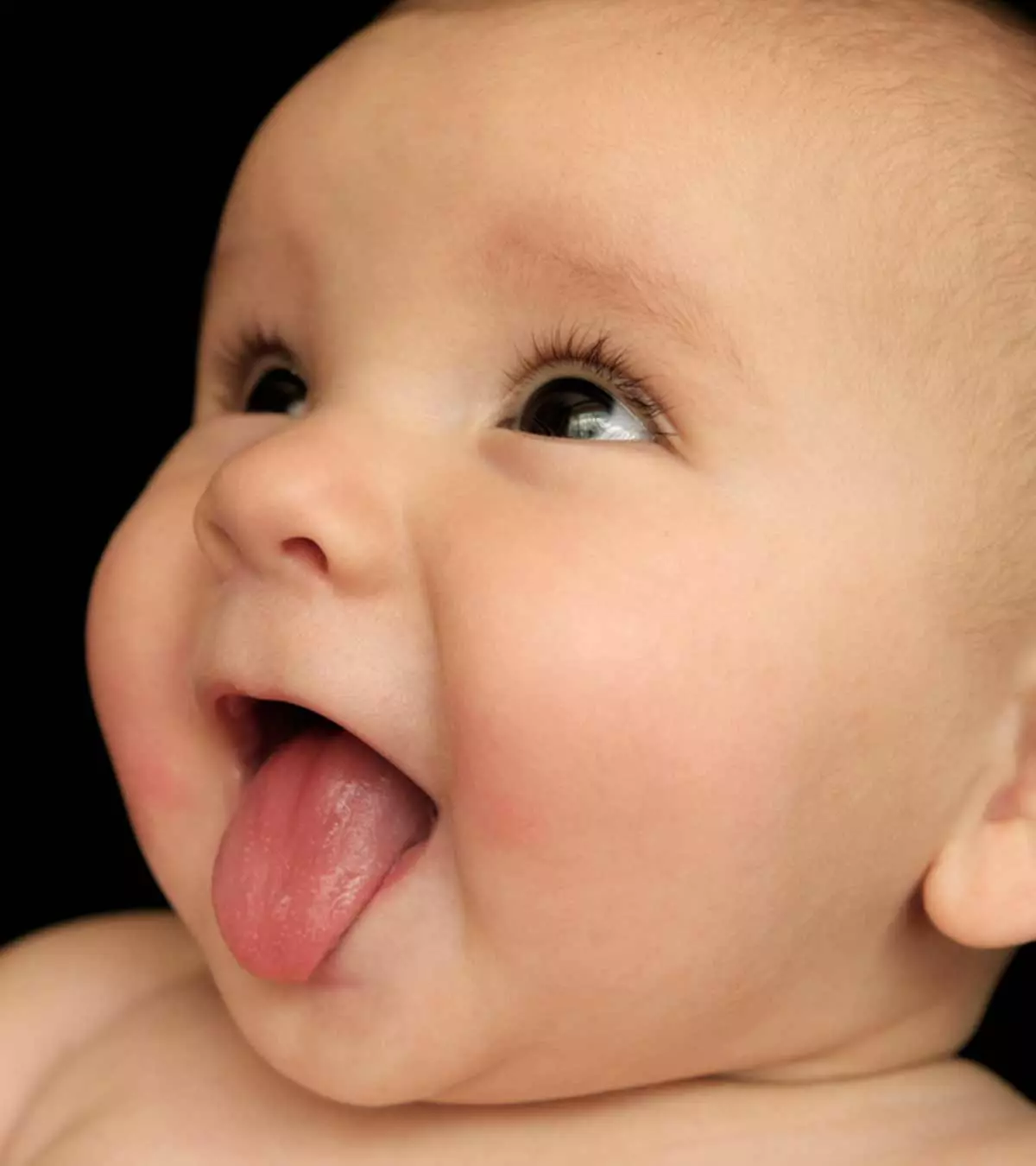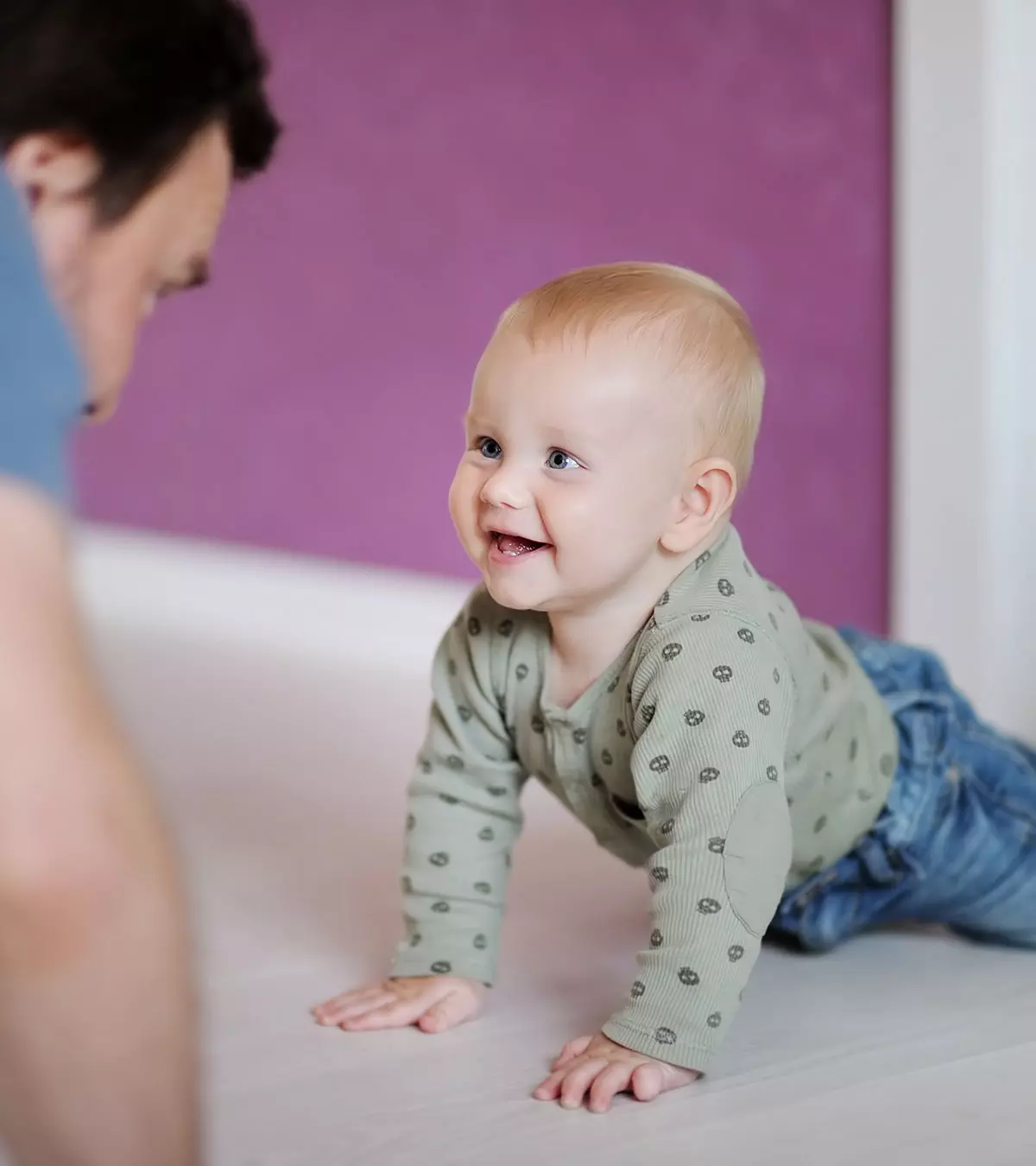
Image: iStock
“Why do babies get clingy?” is a common question many parents have when their little ones constantly demand to be around parents or caregivers. Clinginess is a normal sign of mental development at an early age. It can also signify separation anxiety, where a baby may cry or behave crankily to be away from the parents. Babies and toddlers can express strong emotions and behaviors when away from the one they love to cling to all the time. A clingy baby is also called a Velcro baby since they may not like being put down from the hands of a parent or a caregiver. Clinginess is a normal behavior that shows a baby’s need for comfort and security. It is a typical part of the child’s emotional growth and is related to their attachment to caregivers. Although babies may cry and throw tantrums when away from their favorite person, it is manageable, and you can help them overcome this phase. Read on to discover why babies get clingy and how to manage them.

Key Pointers
- Clinginess in babies is a normal sign of mental development at an early age and can also indicate separation anxiety.
- Stranger anxiety typically develops around 9 months and is a sign of the baby’s growing awareness of their surroundings and caregivers.
- Separation anxiety is closely linked to a child’s sense of security and extent of relationship with their caregiver.
- Techniques to help babies overcome clinginess and separation anxiety include gradual separation, giving toys or a piece of cloth, and hiding emotions while leaving the baby alone.
Reasons Your Baby Is Clingy
Stranger Anxiety
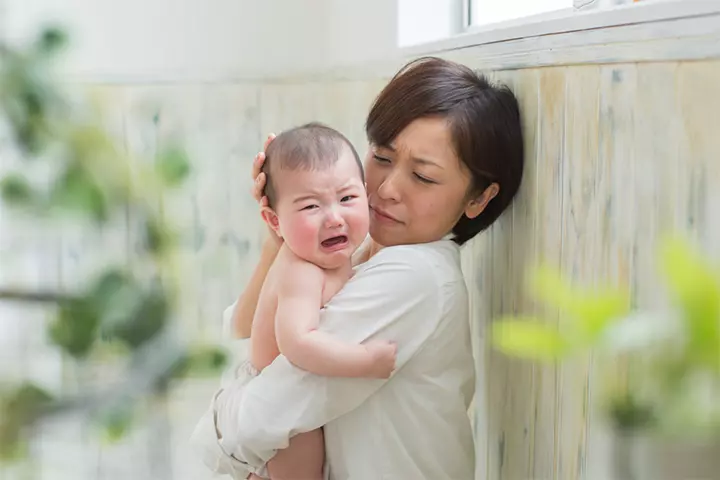
The Raising Children Network states, “Fear of strangers is a common part of development (1).” Stranger anxiety typically begins around 5 to 6 months of age and tends to peak between 7 and 10 months. While it may last for only a few months, it can persist for a longer period in some children. In most cases, the anxiety starts to fade between 18 months and 2 years, though a child’s temperament can influence how long it continues (1).
Babies can differentiate familiar faces from strangers by the age of six months. What is termed “stranger anxiety” typically develops around nine months, but has a wide range. The behavior reflects a child’s cognitive development. While infants recognize their caregivers from birth, by around nine months they have the capacity to hold the caregiver’s image in their mind and recognize another person as a relative stranger. Stranger anxiety is part of the baby’s normal social and emotional development (2) (3). It indicates developmental progress in the baby’s awareness of their surroundings and their primary caregivers
In the early months of infancy, a child may cry for food, love, or attention, other than any physical troubles. Young babies think that the parent or primary caregiver is part of them. As the little brain grows, they realize that you are a separate person, and may grow fussy, start crying and become clingy.
At this stage clinginess may occur even if you are in their presence, even with familiar people such as grandparents. Infants differ widely in the degree to which they experience typical stranger anxiety. The behavior may be exacerbated under stress, such as illness or a move to an unfamiliar environment. If your baby suddenly becomes significantly more clingy than usual, they may be communicating stress. This stress could be from an illness, a move to an unfamiliar environment, or something more serious such as a neglectful or abusive caregiver.
Charlie, a mum to a baby boy and a blogger, shares her experience of her baby being clingy at fourteen weeks. She says, “Thank god we made it out alive… I mean, it’s hard enough dealing with a new baby when you’re tired. Let alone a crying, clingy, cranky baby who has stopped sleeping all together!… Ollie started to get more and more fussy during the day and night time. He was incredibly clingy, forever cranky, and I’m not sure if he did anything other than cry for a grueling six to eight weeks. We found him extremely difficult most of the time, to be honest. He would cry, squeal, and scream almost as if he were in pain (i).’’
 Quick fact
Quick factSeparation anxiety
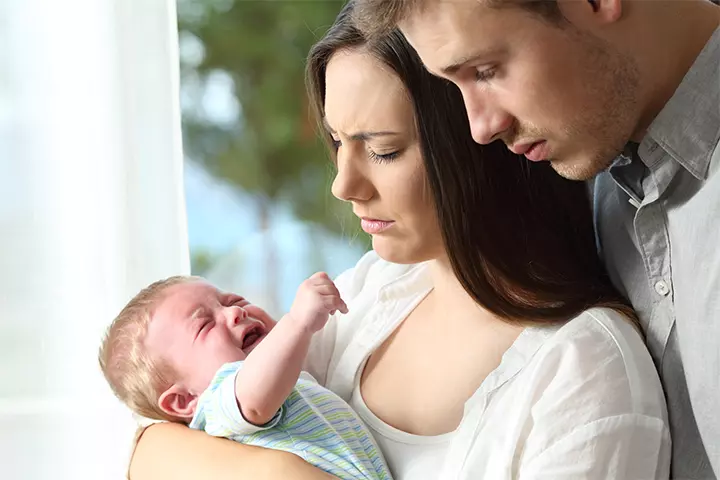
Separation anxiety is a different phenomenon from stranger anxiety. It is closely linked to a child’s security of attachment. When young children feel secure and safe in their relationship with their caregiver, they typically become upset when separated (4). However, they are easily comforted when the caregiver returns. Children differ widely in the degree of separation anxiety they experience. Usually, the intense separation anxiety gradually subsides as children mature and develop significant relationships outside the home. But, according to the Children’s Hospital of Philadelphia, about 3% of children will continue to experience separation anxiety in elementary school (5). If separation anxiety persists or occurs in an extreme form that is disruptive to the functioning of your family, your child may be communicating a level of stress beyond their ability to manage. A consultation with your pediatrician can be useful to identify the source of stress (2).
 Did you know?
Did you know?Comfort and security
Being held provides babies with comfort and security that mimics the sensation of the womb. Hugging or holding a baby also has a calming influence on them. Moreover, babies may find reassurance in the sound of their mother’s heartbeat, which they would have become familiar with while in the womb (6).
Researchers at the University of Padova studied the heart rates of 30 newborns to assess how their bodies reacted to various types of touch. The researchers discovered that when the babies were touched in a non-soothing manner, such as tapping, their heart rates became irregular, indicating stress. On the other hand, when gently stroked in a comforting way, their heart rates remained stable, implying that a soothing touch helps keep them calm (7).
Illness
When a baby is feeling unwell, they may want to be held more frequently and show a strong desire to cuddle. Holding your baby close can offer comfort and help soothe their discomfort during this time. Studies suggest that infants instinctively snuggle into their caregiver’s neck when held, aligning their bodies together. This natural position not only comforts the baby but also enhances their emotional connection with the caregiver (8).
Tips For Dealing With A Clingy Baby
Clingy behavior can be stressful for both parents and children.
But remember that clinginess is typically a sign of positive development, and there is no need to feel guilty about staying away from your baby for necessities. You may use various techniques to ensure your baby learns to accept your absence. Sneaking out can make your child clingier when you are back. So, you may inform your little one before you go, to get over the clingy phase as soon as possible.
The following tips may help you handle and effectively manage clinginess and baby crying behaviors when you have to be away from them for work or when the baby is clingy for other reasons (2).
1. Gradual separation may cause less meltdown

Children are sensitive to separation. You may try to leave them in another room or with a family member for short periods in the initial days. You may initially leave them with someone who they are comfortable or attached with, such as a trusted caregiver or the other parent. Later, you may try grandparents or any other responsible and affectionate person who would take care of the baby while you are away (9).
When you return, always talk to the baby to assure them that you will be back and not leave them alone. Moms who need to go back to work after maternity leave may try a shorter duration of separation before leaving. These steps can be helpful if you are planning to send the baby to daycare (9).
2. Give toys or your cloth
You can give your baby’s favorite toy for them to play with when you are away. You may also provide a scarf or some of your clothes that your baby could feel comfortable with or is attached to (9). Ensure that you are giving safe toys and other items that do not pose a choking or strangulation hazard to the baby.
Goriami, a mother, shares how she uses toys to help her baby feel more comfortable when separated from her. She says, “We have entered a new stage with Yo, who is now 8 months old, the clingy baby stage. That is to say, she cries at anyone who isn’t in the household. Grandparents are now smiled at with huge smiles, but when they lift her up for a cuddle, they are greeted with shrieks of horror and her arms stretch out to Mummy and Daddy.. If I distract her with toys she will let me move out of sight leaving grandparents in charge. I just have to resist the urge to step in as soon as she cries – this is proving harder than it may sound! (ii)“
3. Hide your emotions while leaving them alone

If your baby notices that you are also upset or sobbing, then they may become clingier and start crying. Wave hands and say goodbye with a smile when leaving the baby at daycare or kindergarten. This may give them some assurance that you will be back soon, and that there is nothing to get insecure or worried about (9).
4. Share the plan with toddlers
If your child is old enough to understand, then you can talk to them about what you will be doing later, that is, after the separation period. You may tell them that you will take them out, watch some cartoons, or play something together after kindergarten or after your office work (9).
These plans could reinforce that you will be back and thus help your child to stay calm. Remember to keep your promises to gain your child’s confidence.
5. Clinginess is temporary
Babies and toddlers can learn to accept regular separation for a short time. You will see your clingy baby happily waving hands when you go to work or leave them at daycare or nurseries.
6. Do a regular practice
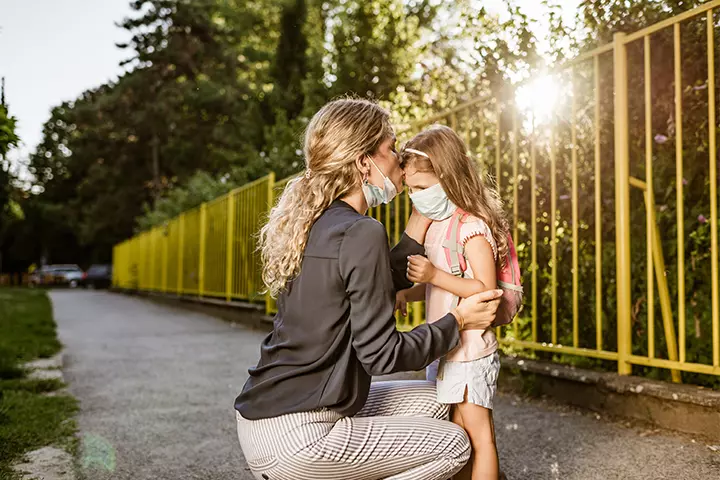
Children do well when separations follow a regular pattern. Always say goodbye, give an affectionate kiss, wave goodbye, or tell them that you will be back when you are leaving them. Stick to any of these exit plans every day. This could make them understand that you will be away for some time and would come back soon.
 Quick tip
Quick tipFrequently Asked Questions
1. When do babies get clingy?
Children may act clingy between six months and three years as separation anxiety and fear of strangers is common around this age. It is a normal part of a child’s development, and they eventually outgrow it (10).
2. Why do babies get clingy when mom is pregnant?
A study showed that young children (surveyed population was children between one and a half and four years of age) showed clinginess, sleep problems, and misbehavior with more tantrums when their mothers were pregnant. The pregnant mothers (third trimester) were tired and moody, and perhaps the mother’s changes during pregnancy made children anxious and insecure (11).
3. Why do babies get clingy when sick?
Babies are considered more susceptible to separation anxiety when they are sick and hence may get more clingy (12).
4. Is a growth spurt making my baby clingy?
Growth spurts in babies are periods when they experience rapid physical growth. They experience eating or sleeping changes that could take a toll on their emotions (13). These changes could cause your baby to become fussier than before. They can also turn clingy and not want to part with their guardian. Cuddling and reassurance are good tactics to soothe them during these times.
5. Should I pick my baby up every time they cry?
Picking babies up when they cry makes them grow into healthier, more emphatic, and more productive people. It makes them feel safe, secure and connected. Babies are highly responsive to parents’ touch in the early years. The actions and responses of parents to their baby’s needs impact their development. Stress in babies might be triggered when they are left to cry, making them more reactive as they grow older.
6. Are breastfed babies more clingy?
Stranger and separation anxieties are a regular part of a child’s development, and children could have a vast range of normal behaviors based on their distinctive temperaments. Sometimes, babies can get clingy if they have an illness, severe pain, a fever, or other medical problems. However, if your baby’s clingy behavior seems excessive, present without any suitable reason, for attention-seeking purposes, or disruptive to family functioning, you may consult your doctor to clarify your concerns. Seeking professional help to deal with a clingy baby could help you support them in the smooth transitioning of their developmental phases. Further, you can help them understand that this separation is temporary, thus aiding in alleviating their clingy behavior.
Infographic: Tips On Dealing With A Clingy Baby Or Toddler
When your baby wants no one but you for all their needs, it makes you feel loved but also leads to tricky situations. Although this is a part of a baby’s growth, it might be stressful for parents. So, read through the infographic below to learn ways of dealing with a clingy baby.
Some thing wrong with infographic shortcode. please verify shortcode syntax
Illustration: Helpful Tips To Deal With A Clingy Baby
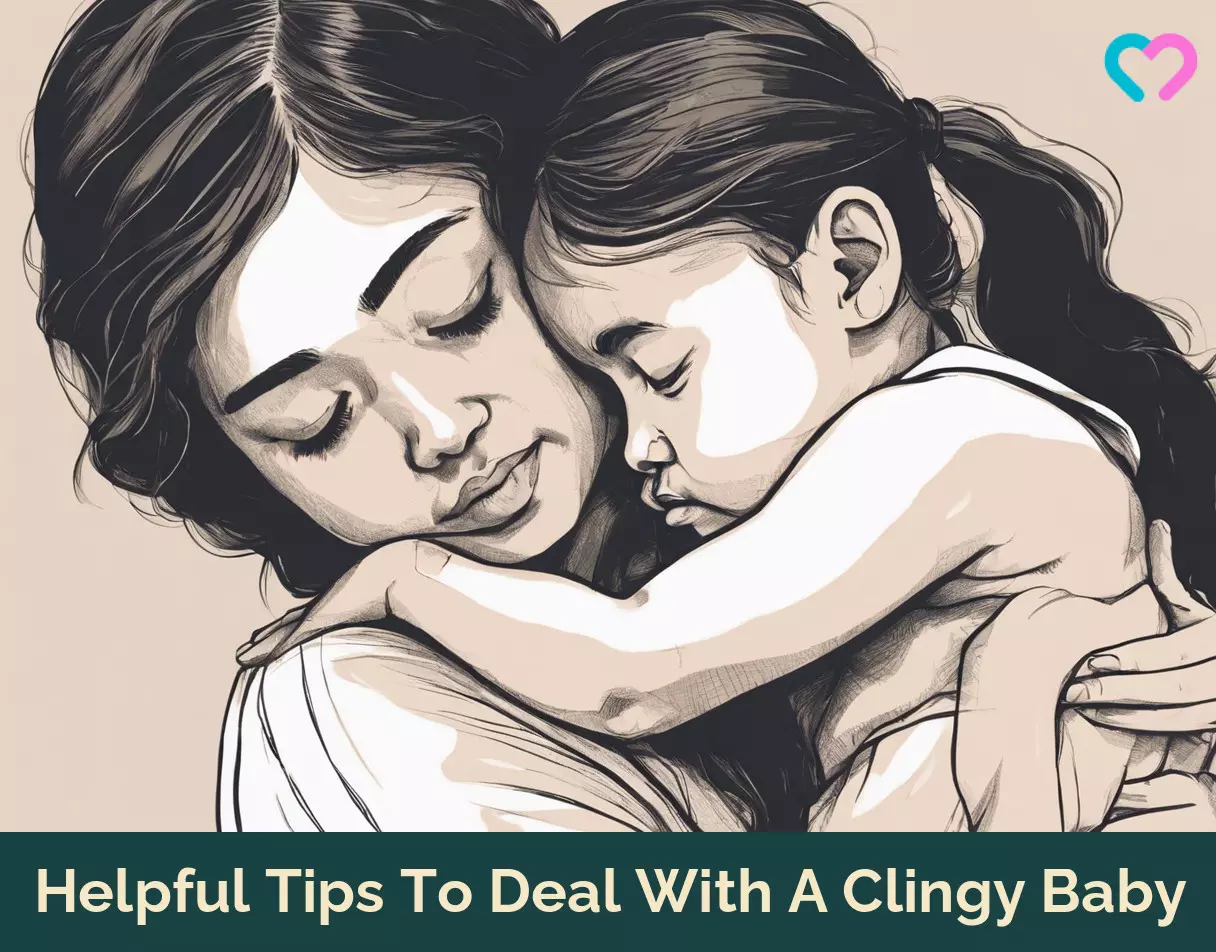
Image: Stable Diffusion/MomJunction Design Team
Learn helpful ways for dealing with clinging babies. This essential video for parents provides valuable guidance and support, including suggestions on soothing tears and asking for proper assistance.
Personal Experience: Source
MomJunction articles include first-hand experiences to provide you with better insights through real-life narratives. Here are the sources of personal accounts referenced in this article.
i. Wonder weeks | So we survived leap four.https://speedygonecharlie.wordpress.com/2019/06/16/wonder-weeks-so-we-survived-leap-four/
ii. The Clingy Baby Stage.
https://dancinginmywellies.com/the-clingy-baby-stage/
References
- Fear of strangers: babies and young children.
https://raisingchildren.net.au/toddlers/behaviour/common-concerns/fear-of-strangers - Amanda Morin; Developmental milestones for typical 1-year-olds;Understood For All Inc.
https://www.understood.org/en/learning-thinking-differences/signs-symptoms/developmental-milestones/developmental-milestones-for-typical-1-year-olds - Important Milestones: Your Child By One Year; Centers for Disease Control and Prevention
https://www.cdc.gov/ncbddd/actearly/milestones/milestones-1yr.html - Clingy babies and separation anxiety: NCT (National Childbirth Trust)
https://www.nct.org.uk/information/baby-toddler/baby-and-toddler-development/separation-anxiety-and-how-cope - Separation Anxiety: What’s Normal and When to Worry.
https://www.chop.edu/news/health-tip/separation-anxiety-whats-normal-and-when-worry - 6 Amazing Reasons Your Newborn Wants to be Held.
https://www.bayareabreastfeeding.net/blog/6-amazing-reasons-your-newborn-wants-to-be-held - Longa, Letizia D., et al.; (2025); In Touch with the Heartbeat: Newborns’ Cardiac Sensitivity to Affective and Non-Affective Touch.
https://pmc.ncbi.nlm.nih.gov/articles/PMC7956468/ - Bigelow, Ann E., and Lela R. Williams; (2025); To Have and to Hold: Effects of Physical Contact on Infants and Their Caregivers.
https://pmc.ncbi.nlm.nih.gov/articles/PMC7502223/ - Separation anxiety in babies and children.
https://raisingchildren.net.au/babies/behaviour/common-concerns/separation-anxiety - Separation anxiety.
https://www.nhs.uk/conditions/baby/babys-development/behaviour/separation-anxiety/# - M.J. Harris et al.; (1989); The Effects of a Mother’s Second Pregnancy on the Firstborn Child.
https://obgyn.onlinelibrary.wiley.com/doi/abs/10.1111/j.1479-828X.1989.tb01753.x - Emotional and Social Development: 8 to 12 Months.
https://www.healthychildren.org/English/ages-stages/baby/Pages/Emotional-and-Social-Development-8-12-Months.aspx - Growth Spurts & Baby Growth Spurts.
https://my.clevelandclinic.org/health/diseases/22070-growth-spurts - Responding to your baby’s cries.
https://www.healthychildren.org/English/ages-stages/baby/crying-colic/Pages/Responding-to-Your-Babys-Cries.aspx - Breastfeeding and Infant Temperament at Age Three Months.
https://journals.plos.org/plosone/article?id=10.1371/journal.pone.0029326 - Stranger Anxiety.
https://parenting-ed.org/wp-content/themes/parenting-ed/files/handouts/stranger-anxiety.pdf - How to Ease Your Child’s Separation Anxiety.
https://www.healthychildren.org/English/ages-stages/toddler/Pages/Soothing-Your-Childs-Separation-Anxiety.aspx
Community Experiences
Join the conversation and become a part of our nurturing community! Share your stories, experiences, and insights to connect with fellow parents.
Read full bio of Claudia M. Gold
Read full bio of Dr Bisny T. Joseph
Read full bio of Dr. Ritika Shah
Read full bio of Ghazia Shah







